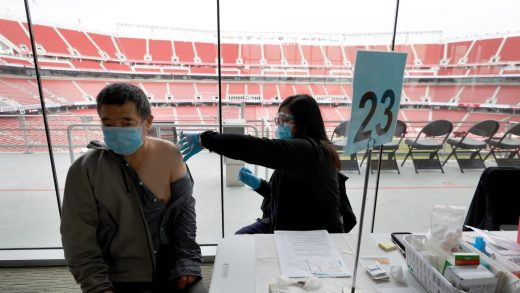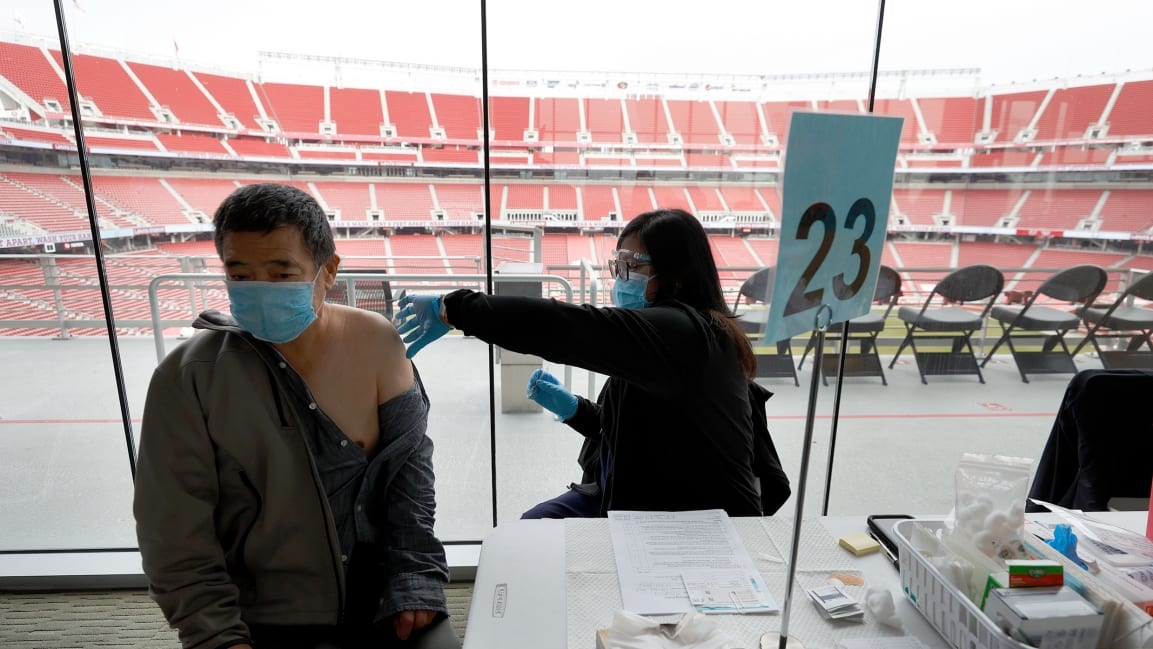The unsung heroes of the pandemic? Sports stadiums
For many people, the COVID-19 pandemic started when the NBA suddenly shut down its season after Utah Jazz player Rudy Gobert was diagnosed with the new coronavirus. The memory of cancelled sports events and images of athletes competing in empty stadiums— right up to this summer’s Tokyo Olympics—are seared into our collective memory.
But in the United States and across the world, sports stadiums have played an unsung role in combatting the pandemic. Well-located, accessible via public transportation and highways, and set up to handle large crowds, stadiums have been used for everything from COVID-19 testing and vaccine deployment to personal protective equipment and food distribution to blood drives, overflow capacity for hospital beds, and accommodations for the rest and recovery of essential workers.
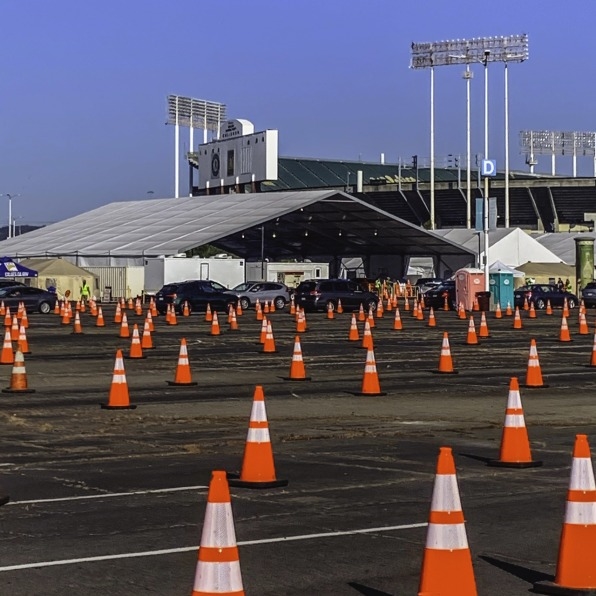
[Photo: Takako Hatayama-Phillips/iStock]
By our accounting, some 26 NFL stadiums, 30 MLB ballparks, and scores of NBA, WNBA, and NHL arenas and MLS and NWSL soccer fields have been used as vaccination sites. Arlington, Texas, was one of the first cities to use its stadiums as vaccination sites and demonstrated the value stadiums can add during a crisis. The community preordered freezers for the stadium while vaccines were still in development. Local officials then coordinated with Rangers and Cowboys executives to use the baseball stadium for the first four weeks and then make a seamless move over to the football stadium for the next eight weeks of vaccinations.
Stadiums have vaccinated a lot of people. More than 600,000 people were vaccinated at the New England Patriots’ Gillette Stadium in Foxboro, accounting for more than one in 10 vaccinations in the entire state of Massachusetts. Another 700,000 people—more than a quarter of the population in a county outside of Glendale, Arizona—got their jabs at State Farm Stadium. And more than half of those from a surrounding community outside of Atlanta were vaccinated at Mercedes-Benz Stadium.
Stadiums played a significant role in getting the vaccines into less-advantaged minority communities. Data from the CDC shows that Black and Hispanic Americans are less likely to be vaccinated than white Americans. Yet, minority populations were vaccinated at stadiums at rates much closer to national averages, according to research conducted in conjunction with the US Conference of Mayors that has not yet been made public.
And stadiums across the country have made special efforts to reach out to their communities. Coors Field in Denver held a $1 million lottery for four consecutive weeks to spur vaccinations. At Yankee Stadium in New York, 325,000-plus people who received vaccines got to meet some of their favorite sports figures.
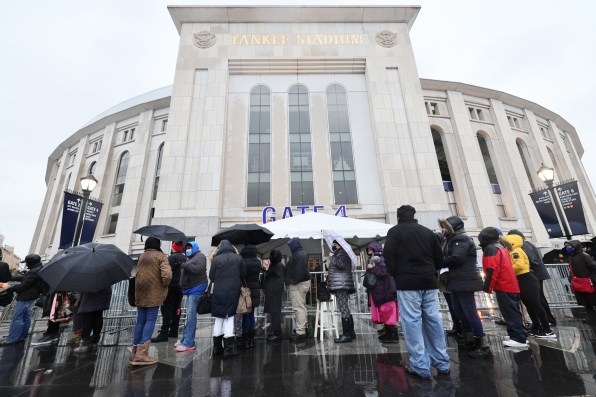
[Photo: Michael M. Santiago/Getty Images]
Sports stadiums not only accommodate large numbers of fans, they are set up to ensure tens of thousands of people can come through safely and with a high degree of coordination. The Baltimore Parks and Recreation Department, which is responsible for distributing food, PPE, and other essential items throughout the city, found M&T Bank Stadium—the downtown home of the Baltimore Ravens—to be the safest place to get the job done.
Stadiums outside the United States have also been enlisted to help combat the pandemic. Premier League stadiums in the United Kingdom have been opened on multiple occasions as a vaccination center for local communities. One among them, Chelsea Football Club, has been providing hotel and food accommodations at its Stamford Bridge home in London for local hospital staffs of Britain’s National Health Service since the start of the pandemic.
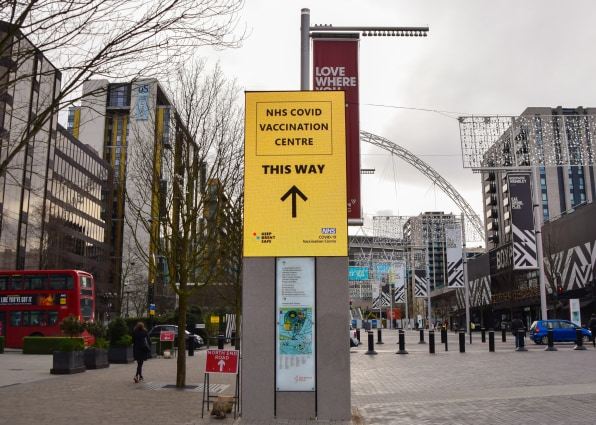
[Photo: VV Photo/iStock]
Stadiums are among the largest investments that cities make in their communities. And there has been ongoing criticism over the use of public funds to subsidize their development, not only because of the millions of dollars involved but because the teams playing in them are often worth billions of dollars and their owners worth even more. Using stadiums to combat the pandemic provides a form of public value and often delivers a time-sensitive return on the investment.
Stadiums and the sports’ teams that play in them forge a strong emotional bond with the community. Through attendance at sporting events and the memories created, residents and visitors come to see a stadium as more than a piece of physical infrastructure. They see stadiums as part of their community’s identity and a place to mobilize people in times of crisis.
Getting a vaccine jab at the local hospital that is 10 minutes away from your home can be comforting and convenient. It can, however, also clog-up space needed for treating patients. Getting a vaccinated at the local stadium can be equally comforting and convenient—and perhaps more embracing of the wider community.
With the Delta variant spurring a fourth wave of the pandemic, with so many remaining unvaccinated, and the Biden administration saying many of us may well need a third dose, the role of stadiums as unsung heroes in combatting COVID-19 is not over yet.
Elizabeth Haas is Adjunct Professor at the NYU Preston Robert Tisch Institute for Global Sport and the Jonathan M. Tisch Center of Hospitality. Arthur L. Caplan is the founding head of the Division of Medical Ethics at NYU School of Medicine. Lee H. Igel is a clinical professor in the NYU Tisch Institute for Global Sport. Richard Florida is University Professor at the University of Toronto’s School of Cities and Rotman School of Management.
(52)

